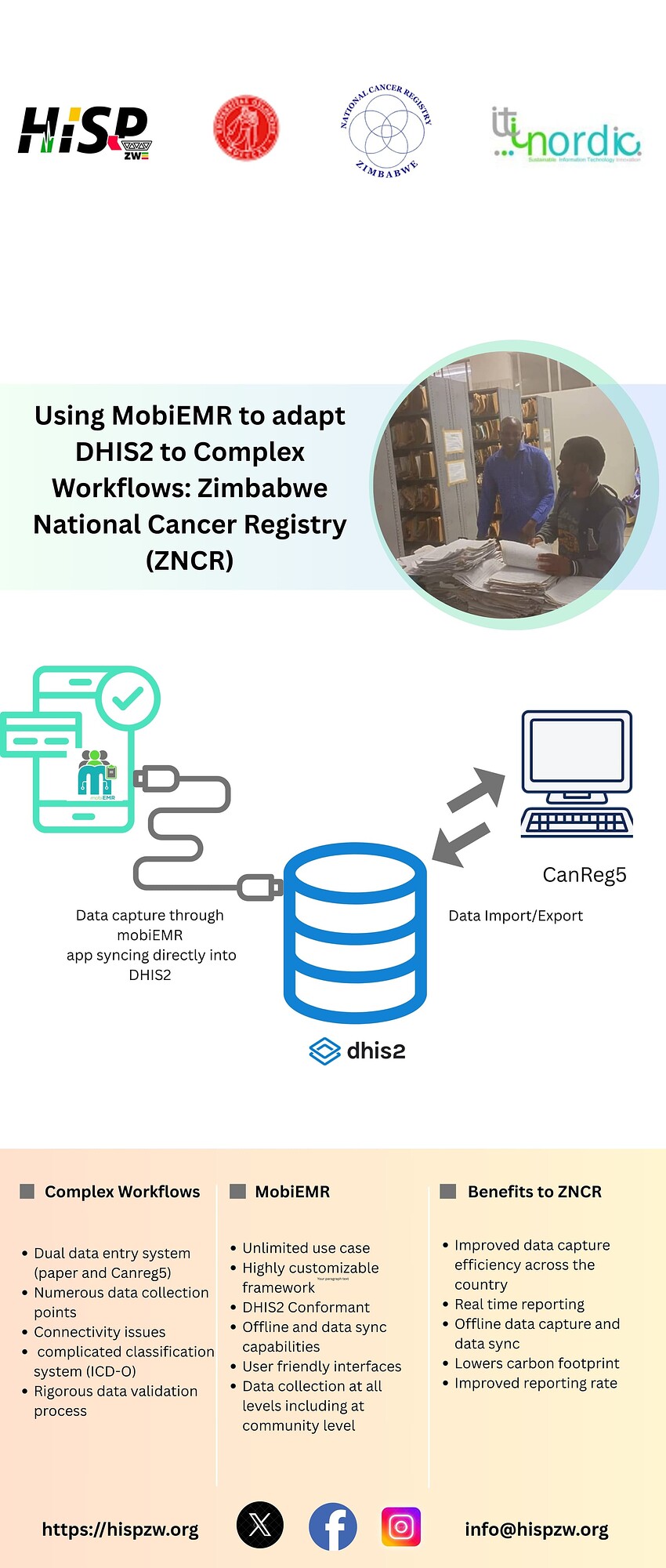The Zimbabwe National Cancer Registry (ZNCR) collects cancer patient data and has relied on a centralised information system. To collect data, personnel from the Registry travel to the hospitals and laboratories that manage cancer patients. There are 2 methods of data collection namely passive, which is an extraction of data from existing patient records and active data collection whereby patients are interviewed. In both instances the Cancer Notification Form (CNF) is populated and used to update the CanReg5. An in-depth analysis into their processes revealed complexities in the Registry’s workflows, there are numerous data collection points, a complicated classification system (ICD-O) and data validation processes but with inadequate resources to have a system functioning from all points to produce quality data.
To address these challenges, the Ministry of Health and Child Care (MoHCC), alongside ZNCR, and learning from a previous implementation in Rwanda, decided to migrate to DHIS2 in 2024, with support from HISP Zimbabwe. An in depth analysis of the workflows for cancer diagnosis and reporting was conducted. Data collection fields across the CanReg5 system were compared with the Rwanda instance, and with the needs of the Cancer Registry through a participatory approach. A comprehensive data dictionary was developed with the key data elements and customized into DHIS2. An Indicator dictionary was also developed along with the formulae. The complexity of workflows and the different departments involved necessitated the implementation of the mobiEMR mobile application for ZNCR. The mobiEMR system is not limited in terms of use cases due to advanced customisation framework, therefore it was easy to customize the ZNCR system.
The findings demonstrate that the integration will improve the efficiency of data collection and analysis for the Cancer Registry.The CanReg5 system, besides being a registry database, has some advanced analytic capabilities for producing visualisations which can not be easily adapted into the DHIS2 platform. Implementation of the mobiEMR system bridges the gap between CanReg5 and DHIS2 by providing for user friendly interfaces conformant to existing workflows and a layer to share data between DHIS2 and CanReg5 so as to facilitate building upon existing processes, institutions and infrastructure. Leveraging DHIS2’s decentralized structure, MobiEMR’s flexibility and real-time data reporting capabilities with CanReg5’s robust and complex analytical engine offers significant improvements. This 3 tier integration of CanReg5, DHIS2 and MobiEMR is a powerful solution for ZNCR.
enter/return
